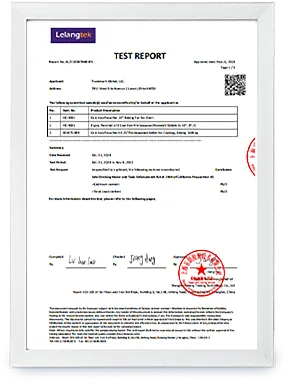
Selecting the Best Cast Iron Pan for Your Cooking Needs and Skills
The Cast Iron Pan A Timeless Kitchen Essential
Cast iron pans have become a staple in kitchens around the world, celebrated for their durability, versatility, and ability to retain heat. While they may seem like a throwback to simpler times, their popularity continues to endure in modern cooking, making them a subject of interest for both seasoned chefs and amateur cooks alike.
The History of Cast Iron Cookware
Cast iron cookware has a rich history that dates back to ancient China, where it was first used for cooking. It later made its way to Europe, where it gained popularity in the 18th century, especially in England and France. The development of the casting process allowed for mass production, making these pans accessible to a wider audience. By the 19th century, cast iron pans had become a common sight in American kitchens, valued for their long-lasting quality and ability to withstand high temperatures.
Advantages of Using Cast Iron Pans
One of the most significant advantages of cast iron pans is their heat retention and distribution. Unlike many modern non-stick pans, cast iron can be heated to very high temperatures, making them ideal for searing meats and achieving a perfect crust. Once heated, they maintain that heat for an extended period, allowing for even cooking.
In addition to their superior cooking abilities, cast iron pans are incredibly versatile. They can be used on the stovetop, in the oven, or even over an open flame while camping. Whether you’re frying, baking, sautéing, or roasting, the cast iron pan can handle it all. Moreover, they become seasoned over time, developing a natural non-stick surface that enhances the flavor of the dishes prepared in them.
Proper Care and Maintenance
cast iron pan

To ensure a long lifespan, proper care of cast iron pans is crucial. Unlike other cookware, cast iron requires a little extra attention to maintain its seasoning. After each use, it’s essential to clean it with just hot water and a stiff brush—avoid soap and steel wool, which can strip the seasoning. Once cleaned, it should be dried thoroughly to prevent rust and lightly coated with a thin layer of oil to maintain its non-stick surface.
Seasoning a cast iron pan involves applying a thin layer of oil and heating it, which creates a protective layer that improves its cooking properties. Regular seasoning not only enhances its performance but also adds to the pan's longevity.
Environmental and Health Considerations
In recent years, there has been a growing interest in sustainable and health-conscious cooking methods. Cast iron pans fit perfectly into this trend. They are made from natural materials and, when properly maintained, can last for generations, reducing the need for disposable cookware. Additionally, cooking with cast iron can add dietary iron to your food, a beneficial property for many individuals, especially those with iron deficiencies.
A Timeless Investment
Investing in a cast iron pan is investing in a kitchen workhorse. Unlike other non-stick pans that need replacement every few years, a well-cared-for cast iron pan can last a lifetime—often becoming a beloved family heirloom. With its blend of historical significance, practical benefits, and sustainability, the cast iron pan remains a beloved fixture in kitchens around the globe.
In conclusion, the cast iron pan is more than just a cooking tool; it’s a symbol of culinary tradition and innovation. With its remarkable versatility and ability to improve with age, it’s easy to see why the cast iron pan has stood the test of time, continuing to inspire generations of cooks to create delicious, hearty meals. So whether you’re frying up a breakfast of eggs and bacon or baking a cornbread, the cast iron pan belongs in your kitchen.
-
Season Cast Iron Perfectly with GPT-4 Turbo TipsNewsAug.01,2025
-
High Quality Cast Iron Cookware - Baixiang County Zhongda MachineryNewsAug.01,2025
-
Premium Cast Iron Pan: Durable & Perfect HeatNewsAug.01,2025
-
High Quality Kitchen Durable Black Round Cast Iron Cookware Pancake Crepe Pan-Baixiang County Zhongda Machinery Manufacturing Co., Ltd.NewsAug.01,2025
-
Cast Iron Cookware - Baixiang County Zhongda Machinery | Nonstick, Heat ResistanceNewsAug.01,2025
-
High Quality Kitchen Durable Black Round Cast Iron Cookware - Baixiang County Zhongda Machinery | Non-Stick, Heat Retention, DurableNewsJul.31,2025


